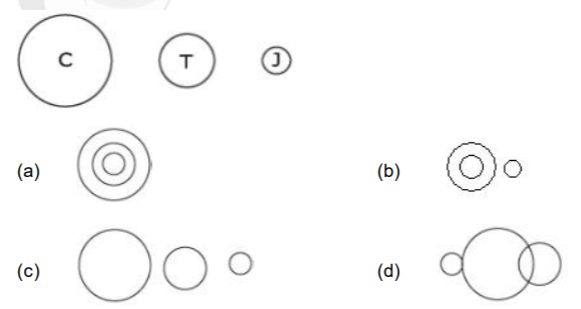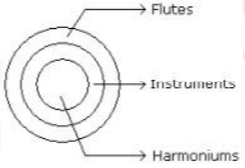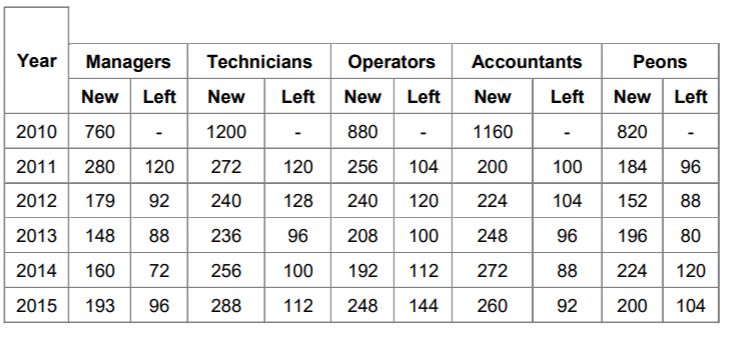 Introduction
Introduction
NTA UGC NET June 2019 Exam will be conducted in online mode to determine the candidate’s eligibility for Assistant Professor and Junior Research Fellowship (JRF) or Assistant Professor posts only in Indian Universities and Colleges. It will be a Computer-Based Test (CBT) consisting of two papers, i.e., Paper I and II conducted in two different sessions.The article provides UGC NET General Paper I Model Questions paper useful for the candidates to score good marks in exam.
 Questions
Questions
1. To make learning effective, a goal must be meaningful in terms ______ ?
- A. Objectives of the curriculum
B. Intellectual ideas
C. Standards of others
D. The needs and purposes of students
- A. Learning style
B. Personality
C. Socio-cultural background
D. All of the above
- A. 42nd Amendment
B. 54th Amendment
C. 83rd Amendment
D. 93rd Amendment
- A. Different tasks requiring different responses
B. Different tasks requiring the same response
C. Similar tasks requiring different responses
D. Similar tasks requiring the same response
- A. Relationship between teachers and students
B. Subject matter
C. Teaching techniques and aids used
D. Student's knowledge
- A. Real life situations
B. Experimental Situations
C. Laboratory Situations
D. None of the above
- A. Cluster sampling
B. Random sampling
C. Stratified random sampling
D. Systematic sampling
- A. Law of certainty
B. Law of probability
C. Personal judgment
D. None of the above
- A. Culture
B. Way of life
C. Progeny
D. Both (A) and (B)
- A. Stereotyping
B. Halo effect
C. Projection
D. All of the above
| Barriers | Categories |
|---|---|
| 1. Sender-related barrier | A. Non-verbal signals |
| 2. Situation-related barriers | B. Noise |
| 3. Receiver - related barriers | C. Perceptions |
- A. 1-A, 2-B, 3-C
B. 1-B, 2-A, 3-C
C. 1-A, 2-C, 3-B
D. None of these
- A. Setting communication goals
B. Using correct amount of redundancy
C. Partial listening and distractions
D. Improving communicator's credibility
- A. Communication flows from superiors to subordinates
B. Communication flows between manager and members of other work-groups
C. Communication flows between peers
D. None of the above
- A. Television Channel
B. News Paper
C. Autonomous Broadcasting Corporation
D. Magazine
- A. United Nation Information
B. United News of India
C. Union News India
D. All of these
- A. Census of India
B. National Sample Survey
C. Statistical Abstracts of India
D. National Family Health Survey
- A. 85
B. 97
C. 109
D. 178
- A. Jowar
B. Wheat
C. Paddy
D. Mustard
- I. Yes, if everyone realizes the hazard it may create and co-operation to get rid of it. Pollution may be controlled.
II. No, the crowed highways, factories and industries and an ever growing population eager to acquire more and more land for constructing houses beyond control.
- A. If only argument I is strong.
B. If only argument II is strong.
C. If either I or II is strong.
D. If neither I nor II is strong.
- A. West
B. South-West
C. South
D. North-West
- A. GTHS
B. GHTS
C. GSTH
D. TGSH
- A. a
B. b
C. c
D. d
- I. No. It will also help in success of compulsory education programed.
II. Yes. It will help to eliminate the adult illiteracy.
- A. Only argument I is strong
B. Only Argument II is strong.
C. Either I or II strong
D. Neither I nor II is strong
- A. Brother
B. Uncle
C. Father
D. Grandfather
- I. All Flutes are Instrumental
II. All the harmoniums are flutes.
- A. Only I Conclusions follows
B. Only II Conclusions follows.
C. Either I or II follows.
D. Neither I nor II follows.
- A. Ideas generated from planned deliberations between artists, painters and thinkers
B. The dissemination of ideas through the state and its organizations
C. Accidental interactions among people blessed with creative muse.
D. Patronage by the rich and powerful that supported art
- A. An art movement that has ceased to remain interesting or useful.
B. An analogy from the physical world to indicate a historic art movement.
C. An analogy from the physical world to indicate the barrenness of artistic creations in the past
D. An analogy from the physical world to indicate the passing of an era associated with an art movement
- A. Both, in general, include a gamut of distinct but interconnecting activities.
B. Both have movements not necessarily concerned with innovation.
C. Both depend on collaborations between talented individuals.
D. Both involve abstract thought and dissemination of ideas.
- A. The existence of movements such as surrealism.
B. Landmarks which give a pattern to the art history of the twentieth century
C. New language tools which can be used for further explorations into new areas
D. The fast changing world of perceptual and transcendental understanding.
- A. Creative processes are not 'original' because they always borrow from the past.
B. We always carry forward the legacy of the past
C. Past behaviors and thought processes recreate themselves in the present and get labeled as 'original' or 'creative'.
D. 'Innovations' and 'original thinking' interpret and develop on past thoughts to suit contemporary needs.
- A. Virus is a part of software
B. Virus is an operating System
C. Internet does not allow the virus to spread.
D. Virus improves the speed of processing information through computer
- A. Dodgy Data Exchange
B. Dynamic Data Exchange
C. Dynamic Disk Exchange
D. Dogmatic Data Exchange
- A. Bug
B. Spam
C. Follies
D. Mistakes
- A. Multitask
B. Multimedia
C. Multiprocessing
D. Multiprogramming
- A. Computer is a machine that can process information.
B. Computer is an electronic device that can store, retrieve and quickly process only quantitative data.
C. Computer is a machine that can store, retrieve and process quickly and accurately only qualitative information.
D. Computer is an electronic device that can store, retrieve and process both qualitative and quantitative data quickly and accurately.
- A. Department of Elementary Education and Literacy
B. Department of Secondary Education and Higher Education
C. Department of Women and Child Development
D. All the above
- A. Any MLA
B. Chief of Army Staff
C. Solicitor General of India
D. Mayor of Delhi
- A. 1964
B. 1968
C. 1986
D. 1992
- A. London
B. Paris
C. New York
D. New Delhi
- A. Ministry of Social Justice and Empowerment
B. Ministry of Human Resource and Development
C. Rehabilitation Council of India
D. National Council of Teacher Education
- A. Plankton
B. nekton
C. Plankton and nekton
D. benthos
- A. blood-worms
B. stone flies
C. Sewage fungus
D. sludge-worms
- A. Closely related organism growing in different niches
B. Closely related organisms growing in the same area/niche
C. Distantly related organisms growing in the same habitat
D. Distantly related organisms growing in different niches
- A. [latex]NO_{x}[/latex]
B. SPM
C. CO
D. [latex]SO_{2}[/latex]
- A. Population
B. Landscape
C. Ecosystem
D. biotic community
- A. 128
B. 112
C. 96
D. 88
- A. 1312
B. 1192
C. 1088
D. 968
- A. Managers
B. Technicians
C. Operators
D. Accountant
- A. 1325
B. 1195
C. 265
D. 1235
- A. 19%
B. 21%
C. 27%
D.29%







